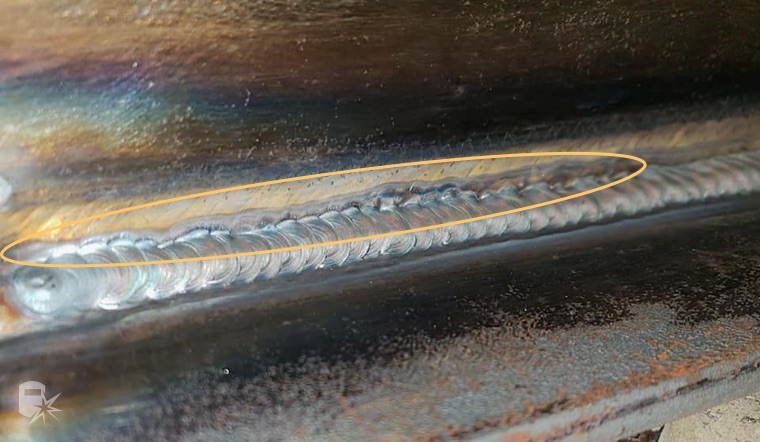Step-by-Step Guide to Preventing Weld Undercut in Different Metals
Step-by-Step Guide to Preventing Weld Undercut in Different Metals
Blog Article
Comprehending the Causes and Solutions for Undercut Welding in Metal Manufacture Processes
In the world of steel fabrication procedures, the event of undercut welding poses a significant challenge that demands an extensive understanding of its causes and sensible options. The elaborate interaction of different variables throughout welding procedures can lead to this unwanted sensation, impacting the architectural integrity and overall quality of the bonded joints - Preventing weld undercut. By dissecting the source of undercut welding and exploring efficient restorative actions, makers can elevate the criterion of their workmanship and make sure the production of remarkable steel elements
Usual Causes of Undercut Welding
Often neglected in metal construction, undercut welding occurs as a result of numerous aspects that require thorough focus and expertise to be successfully mitigated. One typical cause of undercut welding is too much heat input. When the warm input is too expensive, it can result in the melting and subsequent erosion of the base product along the edges of the weld joint, producing a groove or undercut. In addition, improper welding strategies, such as using the wrong welding angle or take a trip rate, can additionally add to undercut development. Poor protecting gas protection is another essential aspect that can result in undercutting. Inadequate gas coverage stops working to protect the weld swimming pool properly, causing oxidation and undercut problems. The choice of welding parameters, such as voltage, present, and wire feed speed, plays a considerable duty in the event of undercut welding. Understanding these common reasons is crucial for carrying out safety nets and making sure high-grade welds in steel construction processes.
Effect of Incorrect Welding Parameters
Unreliable welding specifications can significantly endanger the integrity and quality of bonded joints in metal construction processes. The effect of inaccurate welding specifications shows up in various means, leading to structural weak points and issues in the bonded elements. Precise interest to welding criteria is critical to guarantee the manufacturing of high-quality welds with the wanted mechanical residential or commercial properties and architectural stability.
Result of Improper Lantern Angle
Incorrect lantern angle in welding operations can considerably affect the high quality and honesty of the last weld joints in steel fabrication procedures. Undercutting is a typical welding issue where a groove creates along the weld toe, weakening the joint and compromising its structural integrity.
A lantern angle that is too high can bring about insufficient infiltration, incomplete fusion, and enhanced spatter. On the various other hand, a lantern angle that is also shallow can lead to extreme infiltration, burn-through, and distortion of the base product. Preventing weld undercut. Proper torch click here for more angle is crucial for ensuring consistent weld high quality, toughness, and look
To stop undercutting and various other defects created by incorrect torch angles, welders should be educated to maintain the correct torch angle throughout the welding process. Regular monitoring and modification of lantern angles during welding can aid attain sound welds with marginal defects.
Role of Inadequate Welding Strategies

Another aspect of poor welding techniques is improper weld preparation. Inadequate cleaning of the base metals, inaccurate joint style, or not enough side preparation can all add to undercut welding. Moreover, insufficient shielding gas insurance coverage or utilizing the incorrect type of gas can cause incomplete fusion and the development of undercut flaws.
To resolve the duty of insufficient welding methods in steel construction processes, it is vital to offer thorough training for welders. Proper education and learning on welding parameters, joint prep work, and shielding gas choice can assist prevent undercut welding and make sure premium welds in steel manufacture jobs.
Effective Solutions for Undercut Welding
Attending to undercut welding in metal construction calls for implementing effective remedies to boost weld high quality and architectural stability. One of the key remedies to combat undercut is to readjust welding parameters such as voltage, present, and take a trip speed to ensure appropriate warm input and fusion. By fine-tuning these setups, welders can avoid extreme melting of the base go to website steel and filler product, decreasing the probability of undercut development.
Furthermore, appropriate joint preparation is important in avoiding undercut. Making certain tidy base metal surface areas complimentary of pollutants and making use of the appropriate bevel angle can aid advertise much better weld infiltration and reduce the threat of undercut - Preventing weld undercut. Employing appropriate welding methods, such as oscillating the lantern or weaving, can also help in distributing heat equally and filling the weld joint effectively, reducing the opportunity of undercut defects
Moreover, selecting the proper welding consumables, consisting of electrodes and filler steels, is this link important in minimizing undercut. Using materials with suitable chemical compositions and mechanical properties can add to attaining sound welds with marginal undercut. Routine examination and quality assurance measures must additionally be executed to find and deal with undercut issues immediately, making sure the total honesty of fabricated steel components.

Verdict
Finally, comprehending the causes and solutions for undercut welding in steel fabrication procedures is crucial for attaining premium welds. By resolving usual reasons such as incorrect welding parameters, incorrect lantern angle, and poor welding techniques, welders can protect against undercutting and make sure strong, sturdy welds. It is crucial to take note of these aspects and apply effective options to improve the overall welding process and end product top quality.

Report this page